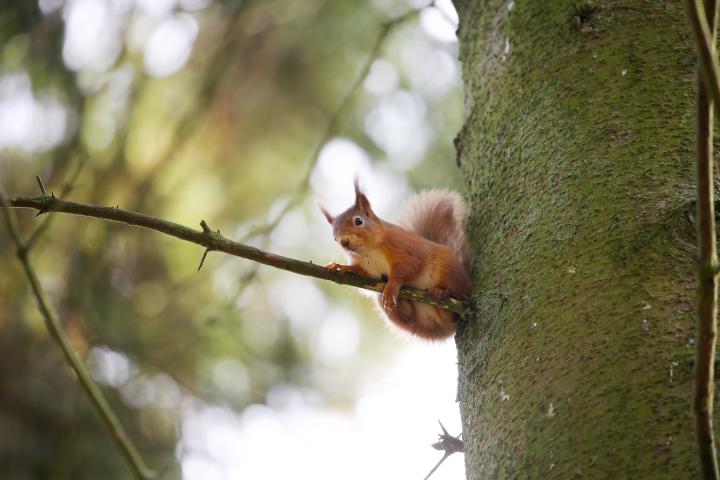Scientists have confirmed the death of a red squirrel from squirrelpox virus in an area previously unaffected by the disease.

The case on the outskirts of Dunfermline, Fife, is the first time the virus has been confirmed north of Scotland's central belt. Its arrival in the area poses a major threat to Scotland's more northerly red squirrels, experts say.
People living in the region are urged to remain vigilant and take action to help reduce the spread of the disease, by recording sightings of affected squirrels and removing garden feeders, which can enable disease spread.
Confirmed squirrelpox
Squirrelpox is carried by grey squirrels. It does not affect greys, but can be rapidly lethal when passed to red squirrels.
Symptoms include ulcers, scabs and weeping lesions, which can prevent reds from eating, drinking or moving. It is usually fatal within two weeks and an outbreak can cause local populations to crash.
The case was confirmed via post-mortem examination of a red squirrel by the University of Edinburgh's Royal (Dick) School of Veterinary Studies, after the squirrel was found by a member of the public.
The pox virus was confirmed by the Edinburgh research team and colleagues at the Animal and Plant Health Agency.
This is a worrying development for red squirrels in Scotland, as this case north of the central belt may be the prelude to squirrelpox expansion both locally and further northward, although more investigative work is required to fully assess this risk.
This case also highlights the key role members of the public have in wildlife conservation, as this case was detected from the submission of a dead red squirrel by a member of the public. If any members of the public come across further dead red squirrels in and around Dunfermline, these can be posted to us for examination by following our detailed guidelines.
Under threat
Scotland's red squirrel populations are under threat from the spread of the invasive non-native grey squirrel which, along with carrying the squirrelpox virus, also outcompete red squirrels for food and habitat.
When squirrel pox is present, greys can replace red populations around 20 times as fast as they can through competition alone, experts say.
Preventing spread
We are extremely concerned about this latest news and are asking the local community in Dunfermline to take immediate action and protect red squirrels by taking in all garden and woodland wildlife feeders for the next month, as these can contribute to the spread of the disease from greys to reds and between reds once infected.
We are also asking for everybody to keep a close eye out for, and take photos of, any sick looking red squirrels and email these into us, as well as report all sightings of both species to our website to inform local efforts.
Local organisations in Fife are working alongside the Edinburgh research team and Saving Scotland's Red Squirrels to determine the spread of the disease so far and protect red squirrels in the area.
The Eastern Lowland's Red Squirrel Group is leading local efforts, working in partnership with the volunteer-led Fife Red Squirrel Group. Those interested in volunteering with survey and/or grey squirrel control efforts in the Dunfermline area can email [email protected].
Public guidance
People can report sightings of both red and grey squirrels at scottishsquirrels.org.uk, along with emailing photos of sick reds to [email protected].
Although squirrelpox is not considered harmful to humans, anyone who sees a sick-looking red squirrel is advised not to approach it, but instead contact Saving Scotland's Red Squirrels for advice.






